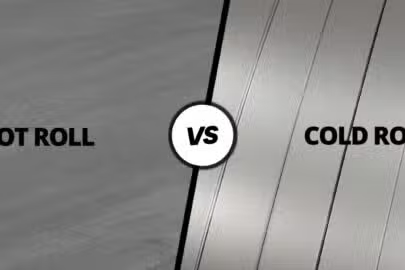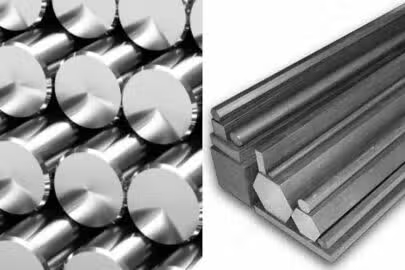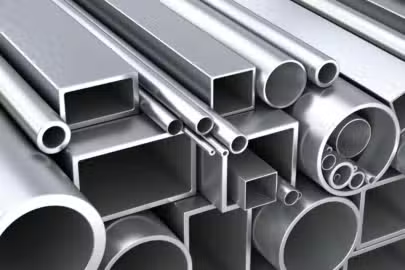Iron is one of the most widely used metals in manufacturing. This metal exists in different forms and alloys, each with unique characteristics that suit specific applications. The primary iron variants include cast iron and wrought iron, with pig iron being crude. Cast iron may further exist as a ductile or grey variant, each with unique features.
This article overviews the different types of iron and explores their composition, properties, and applications. Let’s get right into them.
Overview of Types of Iron
Iron is a versatile and essential metal. It exists in various forms, each tailored to specific industrial and manufacturing applications. The main types of iron include cast iron, wrought iron, pig iron, ductile iron, and grey iron, each distinguished by its composition, structure, and properties.
Below is a brief review of each iron variant.
Cast Iron: It is a high-carbon iron alloy, ranging from 2 to 4 percent, with varying quantities of silicon and manganese. It is valued for its hardness and ability to withstand compression. However, it is brittle, limiting its flexibility, but it excels in heavy-duty industrial applications like machinery and pipes.

Wrought Iron: It is known for its malleability and low carbon content. Therefore, it suits ornamental works and outdoor applications requiring excellent corrosion resistance, such as gates and fencing.
Pig Iron: It is crude iron with a high carbon content—between 3.5 and 4.5 percent —even more than cast iron. This iron alloy is often a raw material for steel production and other iron types. While not suitable for direct use, it plays a foundational role in metallurgy.
Ductile and Grey Iron: They are variants of cast iron. Therefore, both offer considerable strength and impact resistance. However, as the name suggests, ductile iron (also called nodular iron) has improved ductility due to its graphite inclusion and magnesium presence, making it suitable for structural applications. Conversely, grey iron has a graphite microstructure that enhances machinability and vibration damping. It is widely used in engine blocks and housings.
Cast Iron: Properties and Applications
Cast iron is a widely used alloy composed primarily of iron and silicon. Its distinct properties arise from its high carbon content and unique microstructure, making it indispensable in various industrial and construction settings.
Properties of Cast Iron
Below are the distinctive features of cast iron.
- High Compressive Strength: Cast iron excels under compressive loads, making it suitable for durable and structural integrity applications.
- Brittleness: Due to its high carbon content, cast iron is brittle and prone to fracture under tension, limiting its use in dynamic applications.
- Thermal Conductivity: It efficiently conducts heat, making it ideal for applications like cookware and engine components.
- Corrosion Resistance: Cast iron exhibits moderate corrosion resistance, especially in non-acid environments.
- Machinability: The material is easy to machine and cast into complex shapes, reducing manufacturing costs.
Applications of Cast Iron
Cast iron’s versatility and cost-effectiveness make it a staple material in various industries. It balances strength, durability, and manufacturability. Having reviewed its features, here are some of its applications.
- Construction: Cast iron is used in heavy-duty applications such as columns, beams, and foundation structures for buildings and bridges. Its compressive strength ensures stability.
- Automotive Industry: This iron variant is a common choice in fabricating engine blocks, brake discs, and cylinder heads due to its durability and heat resistance.
- Pipes and Fittings: Due to their strength and longevity, Cast iron pipes are common in municipal and industrial water systems.
- Cookware: Its excellent heat retention and even heat distribution make it a favorite for skillets, grills, and Dutch ovens.
- Machinery Components: Gears, machine bases, and other industrial components rely on cast iron’s rigidity and vibration-damping properties.
Wrought Iron: Features and Benefits
Wrought iron has a low carbon content (typically less than 0.08%), making it one of iron’s most malleable and ductile forms. Renowned for its aesthetic appeal and resilience, wrought iron has been popular for centuries, particularly in architectural and decorative applications.
Features of Wrought Iron
The characteristics of wrought iron include the following:
- Malleability: As mentioned, wrought iron is highly malleable, allowing it to be forged, bent, and shaped into intricate designs without cracking.
- Ductility: Its low carbon content ensures excellent ductility, enabling it to withstand stretching and deformation.
- Corrosion Resistance: Wrought iron develops a protective oxide layer over time, significantly resisting rust in non-extreme environments.
- Fibrous Structure: Its unique composition includes slag inclusions, giving wrought iron a characteristic fibrous appearance and added strength.
- Ease of Welding: Due to its low carbon content, wrought iron is easier to weld than other forms of iron.
Benefits of Wrought Iron
While wrought iron is less strong than its cast variant, it suits many applications, especially where corrosion resistance is important. Below are some of its benefits and applications.
- Aesthetic Appeal: Its ability to be shaped into intricate patterns makes it a popular choice for decorative gates, fences, and railings. Its vintage and timeless look enhances architectural designs.
- Durability: Wrought iron is strong and long-lasting, featuring a natural corrosion-resistant property, making it a better choice for outdoor structures exposed to varying weather conditions.
- Versatility: Its properties allow it to be used for various applications, from furniture to structural reinforcements.
- Low Maintenance: With minimal upkeep, wrought iron products can last decades without losing functionality or aesthetic appeal.
- Eco-Friendly: Wrought iron can be recycled and reused, making it an environmentally sustainable material.
Pig Iron and Its Industrial Applications
As mentioned, pig iron is the crude iron that forms the primary product of a blast furnace. It is named for its traditional shape, where the molten iron was cast into molds that resembled a litter of piglets feeding from a sow. However, pig iron is a key intermediary in iron and steel manufacturing, serving as a raw material for refining into steel or other iron-based products.
Properties of Pig Iron
Below, we provide you with more insight into the features of pig iron.
- High Carbon Content: Pig iron contains about 3.5 to 4.5% carbon, making it hard but brittle and unsuitable for direct use in most applications.
- Impurities: Besides its high iron content, it contains significant amounts of silicon, sulfur, manganese, and phosphorus, influencing its quality and usage.
- Hard and Brittle: Its high carbon content gives it hardness but also makes it non-malleable and prone to breaking under stress.
- Low Tensile Strength: Pig iron cannot be used in structural applications due to its inability to withstand tensile forces.
Industrial Applications of Pig Iron
Indeed, pig iron’s high carbon content and brittleness make it unsuitable for direct use. However, its role as a raw material in producing steel and different iron-based metals highlights its significance in modern industrial applications.
- Steel Production: Pig iron is the primary raw material used to produce steel. In basic oxygen furnaces or electric arc furnaces, its high carbon content is reduced, and impurities are removed, converting it into a wide range of steel grades.
- Manufacturing Cast Iron Products: Besides producing steel, pig iron is used to create cast iron. Manufacturers melt and remold the alloy to create cast iron products such as pipes, automotive parts, cookware, and machine components. Its high carbon content makes it ideal for such applications.
- Alloy Production: Pig iron is used as a base material to create specialized iron alloys, such as ductile and malleable iron. By adding specific elements, the properties of these alloys are tailored to meet industrial needs.
- Foundry Applications: Pig iron is used in foundries to manufacture iron castings for machinery, construction, and infrastructure projects. Its ease of melting and casting makes it indispensable for foundry operations.
- Construction: Manufacturers sometimes use pig iron as a raw material in construction to create wrought iron and ornamental ironworks, including gates, railings, and decorative frameworks.
- Chemical Industry: Pig iron is also employed in the chemical industry to produce ferroalloys or deoxidize steel during refining.
Ductile Iron vs Grey Iron: Key Differences
Ductile iron and grey iron are two forms of cast iron, each with distinct properties and applications. Their differences primarily arise from their composition, microstructure, and resulting mechanical characteristics.
Microstructure
As mentioned earlier, ductile iron contains nodular graphite (spheroidal graphite) that forms during casting due to adding magnesium or cerium. This structure gives ductile iron greater strength and flexibility. In contrast, grey iron features a flake-like graphite structure, contributing to its brittleness and lower tensile strength. However, this feature enhances its thermal conductivity and vibration-damping properties.
Mechanical Properties
The increased flexibility of ductile iron affords it superior tensile strength, toughness, and elongation capabilities. It can endure significant stress and deformation without cracking, making it ideal for structural applications. On the other hand, grey iron retains the high compressive strength of cast iron. Also, it is brittle and has low tensile strength. Therefore, it is more prone to cracking under tension or impact.
Machinability
The presence of nodular graphite, increased tensile strength, and increased flexibility of ductile iron make it more challenging to machine. However, once shaped, it offers more versatility. The flake graphite structure and reduced hardness of grey iron favor easy machinability, making it a more cost-effective option.
Thermal Conductivity
Ductile iron offers lower thermal conductivity than grey iron, limiting its effectiveness in heat dissipation applications. Grey iron’s higher thermal conductivity makes it an excellent choice for engine components and cookware where heat transfer is crucial.
Conclusion
Iron comes in different forms, each possessing unique properties. Generally, cast and wrought irons are the most common forms for manufacturing purposes. Pig iron’s crudeness makes it a versatile option for creating iron-based alloys. Ductile and grey iron also possess significant features that makes them suitable for specific applications. In all, manufacturers must understand the differences between the iron variants to select the one that best suits their industrial and manufacturing applications.
Great, Together



